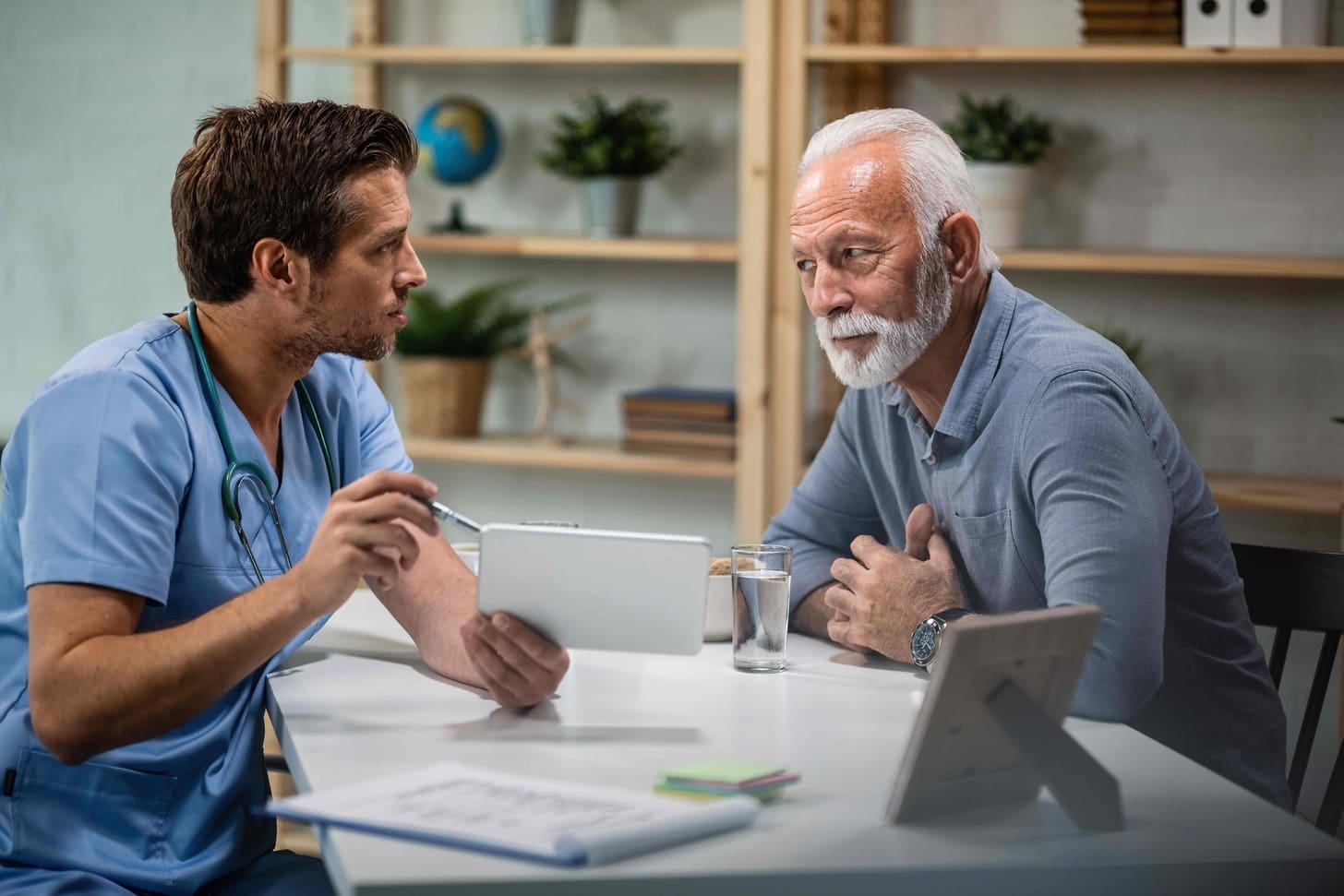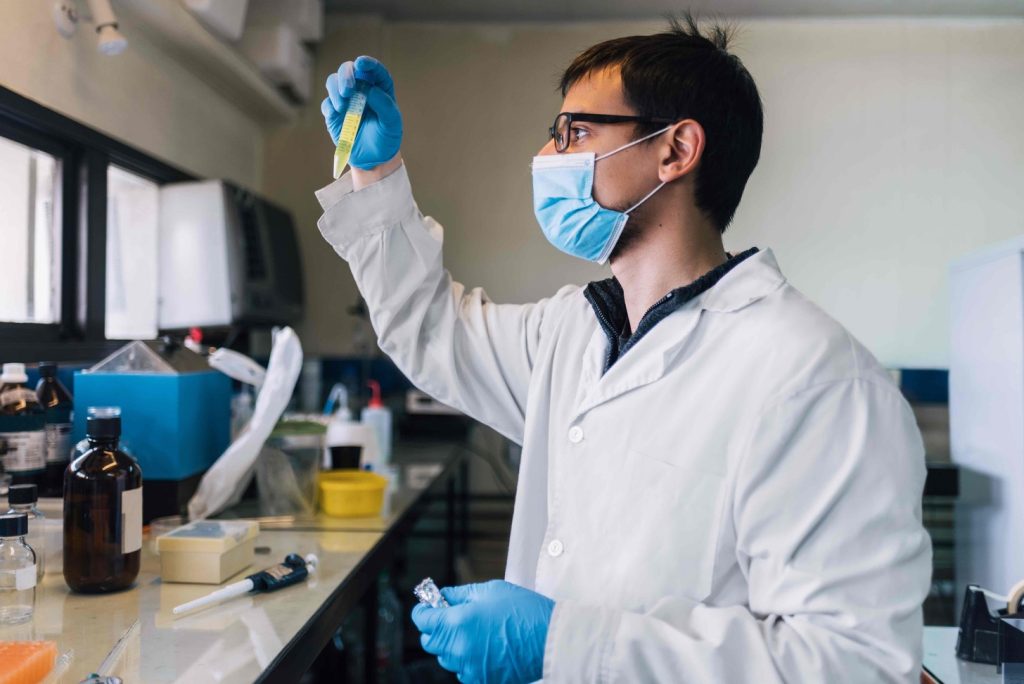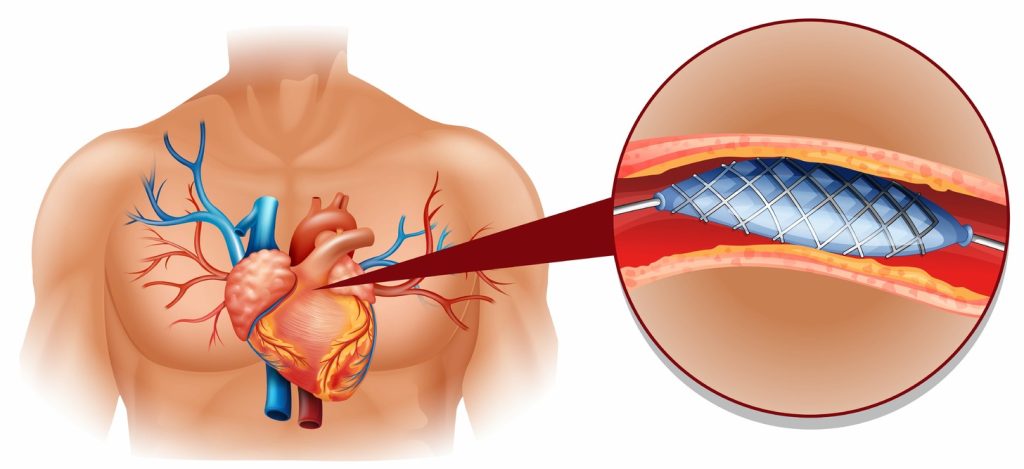
Understanding the difference between autologous and allogeneic transplants is key for patients and families. At Liv Hospital, we focus on patient care and follow international standards. We make sure every transplant choice is the best one.
Autologous transplants use a patient’s own stem cells, lowering the risk of immune rejection. Allogeneic transplants, on the other hand, use donor stem cells. They need HLA matching to avoid problems like Graft-Versus-Host Disease (GVHD). Our team offers personalized care, helping patients understand these complex options.

Stem cell transplantation is a medical process. It replaces damaged or diseased cells with healthy ones. This treatment is getting more attention for its ability to help with many health issues.
Stem cell transplants put healthy stem cells into a patient’s body. These cells can turn into different types, helping the body heal and grow. The process starts with getting stem cells, either from the patient or a donor.
Then, the stem cells are prepared for the transplant. This might include treatments to get the patient ready for the new cells.
Stem cells are key in treating diseases like cancer and autoimmune disorders. They replace damaged cells with healthy ones, helping the body work right again. Their ability to fix and grow tissues is a big help in medicine today.
Key benefits of stem cell transplants include:
The idea of stem cell transplantation has grown a lot over time. Early attempts were risky and not very successful. But, new tech, better treatments, and understanding stem cells have changed things.
Now, stem cell transplants are a known treatment for many conditions. Research keeps going to make them even better and help more people.

The difference between allogenic and autologous transplants is key in choosing stem cell treatments. It’s important for both patients and doctors to know these differences. This knowledge helps in making the right treatment choice.
The main difference is where the stem cells come from. In autologous transplants, the cells are from the patient. In allogeneic transplants, they come from a donor. This affects the transplant process in many ways, like the risk of problems and disease coming back.
Autologous transplants use the patient’s own cells, which lowers the risk of graft-versus-host disease (GVHD). But, they might not work for everyone, like those with certain cancers in their bone marrow. For these cases, allogeneic transplantation is an option. It uses the donor’s immune system to fight cancer.
It’s important to understand the terms. Autologous means using the patient’s own cells. It comes from “autos” (self) and “logos” (origin). On the other hand, allogeneic means cells from someone else, from “allos” (other) and “genos” (origin).
Choosing between autologous and allogeneic transplants depends on many things. These include the disease, the patient’s health, and if a donor is available. Here’s a table that shows what to consider for each type:
| Characteristics | Autologous Transplants | Allogeneic Transplants |
|---|---|---|
| Cell Source | Patient’s own cells | Donor cells |
| Risk of GVHD | Lower | Higher |
| Graft-Versus-Tumor Effect | Absent | Present |
| Ideal Candidate | Patients with localized disease or those who cannot find a suitable donor | Patients with certain leukemias or those who have relapsed after autologous transplant |
Knowing these differences helps patients and doctors make better choices in stem cell transplantation. This knowledge is key in finding the right treatment strategy.
Autologous transplants use a patient’s own stem cells for treatment. This method is popular because it lowers the risk of graft-versus-host disease (GVHD).
The first step is collecting stem cells from the patient. This is done through apheresis, which moves stem cells from the bone marrow into the blood. Then, these cells are stored until they’re needed for the transplant.
Before the transplant, patients go through a conditioning regimen. This includes chemotherapy and sometimes radiation to get rid of diseased cells and weaken the immune system. This step is key for the transplant’s success, helping the stem cells to work well.
After the transplant, patients start a recovery phase. They are watched closely for any issues. The stem cells start making new blood cells, helping the immune system recover.
During this time, patients might get antibiotics and growth factors to help with side effects and recovery. We know recovery can be tough, but with the right care, many patients get back to their normal lives. Our team is here to support you every step of the way, aiming for the best results for our patients.
The success of allogeneic transplants depends on finding a compatible donor. When a patient gets an allogeneic transplant, the donor’s cells are key to the treatment’s success.
Choosing the right donor is important. We look at the donor’s health, age, and genetic match with the patient. Human Leukocyte Antigen (HLA) matching is a big part of this.
HLA matching helps avoid Graft-Versus-Host Disease (GVHD), a serious issue with allogeneic transplants. We use special HLA typing to find the best match.
Donors can be related or unrelated to the patient. Related donors, like siblings or parents, usually have a better HLA match. Unrelated donors are found through national and international registries.
| Donor Type | HLA Matching Likelihood | Advantages | Disadvantages |
|---|---|---|---|
| Related Donor | Higher | Better HLA match, potentially lower risk of GVHD | Limited availability, family pressure |
| Unrelated Donor | Lower | Availability through registries, no family pressure | Higher risk of GVHD, longer search time |
In conclusion, picking a compatible donor is complex. It involves looking at HLA matching and donor type. Understanding these helps improve allogeneic transplant outcomes.
The immune system plays a key role in transplant success. It matters how it reacts to new cells, whether from the patient or a donor. This is true for both autologous and allogeneic transplants.
In autologous transplants, the risk of immune rejection is low. This is because the cells are genetically identical to the patient. But, in allogeneic transplants, where cells come from a donor, the risk of graft rejection or graft-versus-host disease (GVHD) is higher. GVHD happens when the donor’s immune cells attack the recipient’s tissues.
To lower these risks, careful donor selection and HLA matching are done. This helps prevent rejection or GVHD. Yet, allogeneic transplant recipients need close monitoring for GVHD signs. They also get immunosuppressive therapy to reduce this risk.
GVHD is a big problem in allogeneic transplants. It occurs when the donor’s immune cells see the recipient’s body as foreign. GVHD can be acute or chronic, with acute GVHD happening early after transplant and chronic GVHD later.
Managing GVHD involves using immunosuppressive drugs. These drugs can have serious side effects. It’s a delicate balance to prevent GVHD and infections without weakening the immune system too much.
The time it takes for the immune system to recover differs between transplant types. Autologous transplant recipients usually recover faster than allogeneic recipients. Allogeneic recipients might take several months to a year or more to fully recover their immune system.
| Transplant Type | Immune Reconstitution Timeline | GVHD Risk |
|---|---|---|
| Autologous | Faster recovery (weeks to months) | Low |
| Allogeneic | Slower recovery (months to years) | High |
It’s important to understand these differences for patient care after transplant. We watch patients closely for signs of immune recovery and complications. We adjust treatment plans as needed to ensure the best outcomes.
In oncology, stem cell transplants are key treatments. They help fight different cancers. We use both autologous and allogeneic methods for their unique benefits.
Autologous stem cell transplants treat specific cancers. These include:
These transplants use the patient’s own stem cells. They are collected, stored, and then given back after strong chemotherapy. This method lets us use very strong chemotherapy that’s too harsh for the body.
Allogeneic stem cell transplants are for aggressive or hard-to-treat cancers. They use stem cells from a donor. This brings an immune boost that fights cancer cells.
These transplants are needed for:
The graft-versus-tumor effect is a big plus of allogeneic transplants. It happens when the donor’s immune cells attack the cancer. This can lead to long-term remission or even cure some cancers.
Choosing between autologous or allogeneic transplants depends on many things. These include the cancer type, the patient’s health, and if a donor is available. We weigh these carefully to pick the best transplant for each patient.
Key considerations include:
By looking at these factors, we make smart choices. This helps each patient get the best treatment for their cancer.
Studies have shown that autologous and allogeneic transplants have different outcomes. The choice between them affects relapse rates, non-relapse mortality, long-term survival, and quality of life.
Allogeneic transplants often have lower relapse rates than autologous ones. This is because the donor’s immune cells can fight cancer cells better.
A study on acute myeloid leukemia found allogeneic transplants had fewer relapses than autologous ones.
Allogeneic transplants have lower relapse rates but higher non-relapse mortality. Non-relapse mortality includes deaths from complications like graft-versus-host disease and infections.
Long-term survival rates differ between autologous and allogeneic transplants. Factors like disease type, patient age, and transplant complications affect these rates. Allogeneic transplants may offer a survival advantage in some cancers, but this is balanced by higher non-relapse mortality.
Quality of life after transplant is important. Both autologous and allogeneic transplant survivors see quality of life improve over time. But, allogeneic transplant recipients face more challenges due to chronic graft-versus-host disease and other complications.
We look at these factors when comparing autologous and allogeneic transplants. We aim to provide care that meets each patient’s unique needs.
Both autologous and allogeneic transplants face unique challenges. Each needs a special approach to manage these issues. Knowing these complications helps improve patient care.
Autologous transplants use a patient’s own stem cells. They can lead to infections, organ damage, and disease coming back. We watch patients closely to lower these risks.
The prep work for an autologous transplant can cause mouth sores and stomach problems. We use supportive care to help manage these side effects.
Allogeneic transplants use donor stem cells, adding risks like Graft-Versus-Host Disease (GVHD). GVHD happens when donor cells attack the patient’s body. For more on allogeneic stem cell transplant risks, check Liv Hospital’s resource on allogeneic stem transplant.
GVHD can be acute or chronic. The acute form usually shows up within 100 days after the transplant. Chronic GVHD can start months or years later, affecting organs and needing long-term treatment.
To prevent GVHD, we choose donors carefully, match HLA, and use immunosuppressants. We also work to avoid other problems, like infections, by monitoring organ health closely.
If GVHD happens, we treat it quickly with steroids and other drugs. We also focus on supportive care, like nutrition and symptom management.
Patients who get stem cell transplants need ongoing care. This is to watch for late effects, manage chronic GVHD, and catch any new problems. This care is key for the best survival and quality of life.
| Complication | Autologous Transplant | Allogeneic Transplant |
|---|---|---|
| Infection | Common | Common |
| GVHD | Not Applicable | Significant Risk |
| Organ Toxicity | Possible | Possible |
| Disease Relapse | Possible | Possible |
Effective transplant care needs a team effort from many medical experts. At Liv Hospital, we focus on a team effort for full care of our patients.
Our transplant team has many healthcare pros, like hematologists and oncologists. This team gives care that fits each patient’s needs. Transplant procedures need a team with many skills to cover all care areas.
“Transplant success is more than the surgery,” says a leading hematologist. This whole-care approach makes us stand out in transplant care.
Our transplant program focuses on care coordination. We do this through team meetings, detailed records, and clear talks. This makes sure every patient gets smooth care from start to finish.
By managing these stages well, we cut down risks and improve patient results. Our team works hard to offer kind and full care at every stage.
Liv Hospital’s care model supports transplant patients in a unified way. Our model brings together different departments and specialties for the best care.
“Our care model is based on giving each patient a treatment plan that meets their medical, emotional, and social needs.” – Liv Hospital
By using this team effort, Liv Hospital aims to offer top-notch healthcare and support for international patients. We aim to help patients make informed choices that boost their health and life quality.
New trends in transplant therapies are changing how we care for patients. The field is seeing big steps forward. These steps are making transplant treatments better and more accessible.
Haploidentical transplants use donors who are half-matched to the recipient. This is key when a full match is not found. The use of haploidentical donors has expanded the pool of possible donors, helping more patients get transplants.
Studies show haploidentical transplants can work as well as full matches in some cases. This is thanks to better post-transplant care and immunosuppressive regimens.
Cord blood transplantation is also seeing big changes. Cord blood units are a ready source of stem cells when a matched donor is not found. This is great for patients from diverse backgrounds who often struggle to find a match.
Improvements in cord blood banking and transplant techniques have boosted success rates. Double cord blood transplants help increase cell dose, leading to better engraftment and lower graft failure risk.
Reduced-intensity conditioning (RIC) regimens are making transplants more accessible. RIC regimens use less chemotherapy and radiation before transplant. This makes the process safer for older patients or those with health issues.
This approach has opened transplant to more patients. The goal is to reduce harm while keeping the treatment effective against tumors.
Emerging cell therapies, like CAR-T cell therapy, are leading the way. CAR-T cells are designed to attack specific cancer cells, showing promise for some blood cancers.
The development of off-the-shelf CAR-T products and other new cell therapies is exciting. These therapies could greatly improve patient care and expand transplant use.
Understanding the differences between autologous and allogeneic transplants is key. Patients and their families need to know the benefits and risks of each. This knowledge helps them choose the best treatment option.
We’ve looked at the main differences between these transplants and their uses. We’ve also talked about the importance of a team approach to care. Places like Liv Hospital play a big role in providing top-notch, patient-focused care.
Healthcare providers should consider each patient’s needs when deciding on a transplant. At Liv Hospital, we aim to offer the highest quality care. We support our patients every step of the way, ensuring they get the best care possible.
Autologous transplants use a patient’s own cells. This lowers the risk of immune rejection. Allogeneic transplants use donor cells. They need HLA matching to avoid GVHD.
Autologous transplants have a lower risk of GVHD. This is because the patient’s own cells are used.
Donors are picked based on HLA matching. The type of donor, related or unrelated, is also considered. HLA matching is key to prevent GVHD.
GVHD is a complication of allogeneic transplants. It happens when donor cells attack the recipient’s tissues. To manage it, preventive measures and treatments are used.
Autologous transplants are used for certain cancers. Allogeneic transplants are for more aggressive or refractory cases. They use the graft-versus-tumor effect.
Studies show different relapse rates. Allogeneic transplants often have a graft-versus-tumor effect. This can lower relapse risk.
A team of specialists, including hematologists and oncologists, work together. They provide complete care to transplant patients. This ensures the best outcomes.
New innovations include haploidentical transplants and cord blood transplantation. Reduced-intensity conditioning regimens and cell therapies like CAR-T are also emerging. These are improving patient outcomes and expanding treatment options.
HLA matching is key to prevent GVHD. It ensures compatibility between the donor and recipient.
Liv Hospital offers personalized, evidence-based care. A multidisciplinary team provides complete support throughout the transplant process.
Complications include GVHD in allogeneic transplants. Other risks include infection and organ damage.
The graft-versus-tumor effect is when donor cells attack cancer cells. It improves treatment outcomes in some cases.
Subscribe to our e-newsletter to stay informed about the latest innovations in the world of health and exclusive offers!
WhatsApp us